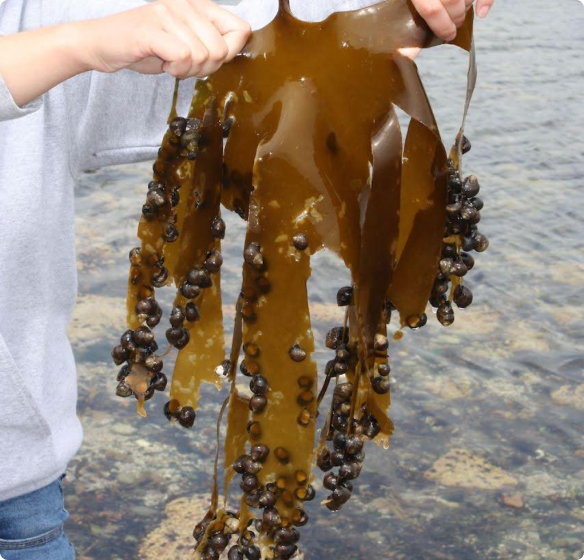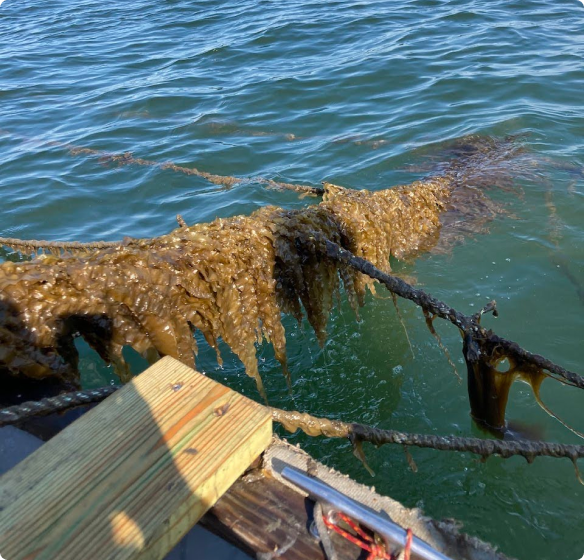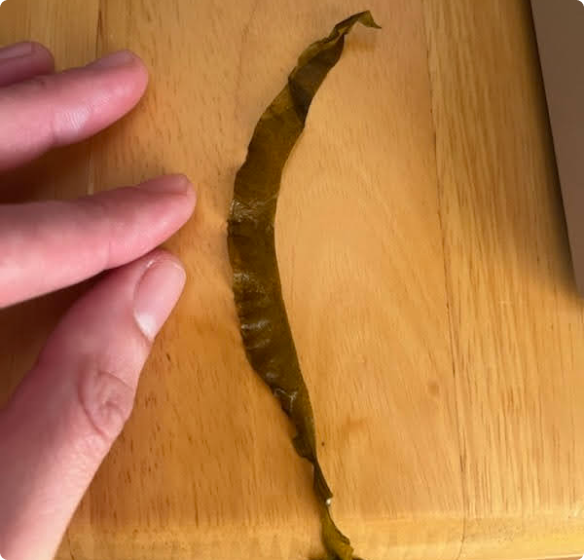Finely-branched, delicate holdfast
Back to: Sorus Collection
Sugar kelp (Saccharina latissima) is a subtidal species. It is found below the Alaria species in the intertidal zone.
On sugar kelp, sorus tissue is identifiable as a dark strip down the center of the blade. However, when it is in the water, it sometimes appears lighter in color than the surrounding blade tissue. It either runs the entire length of the blade or forms in patches. Typically, sorus tissue is slightly raised to the touch and can feel slippery or mucusy.
Click on the blinking green buttons to learn more about sugar kelp anatomy.
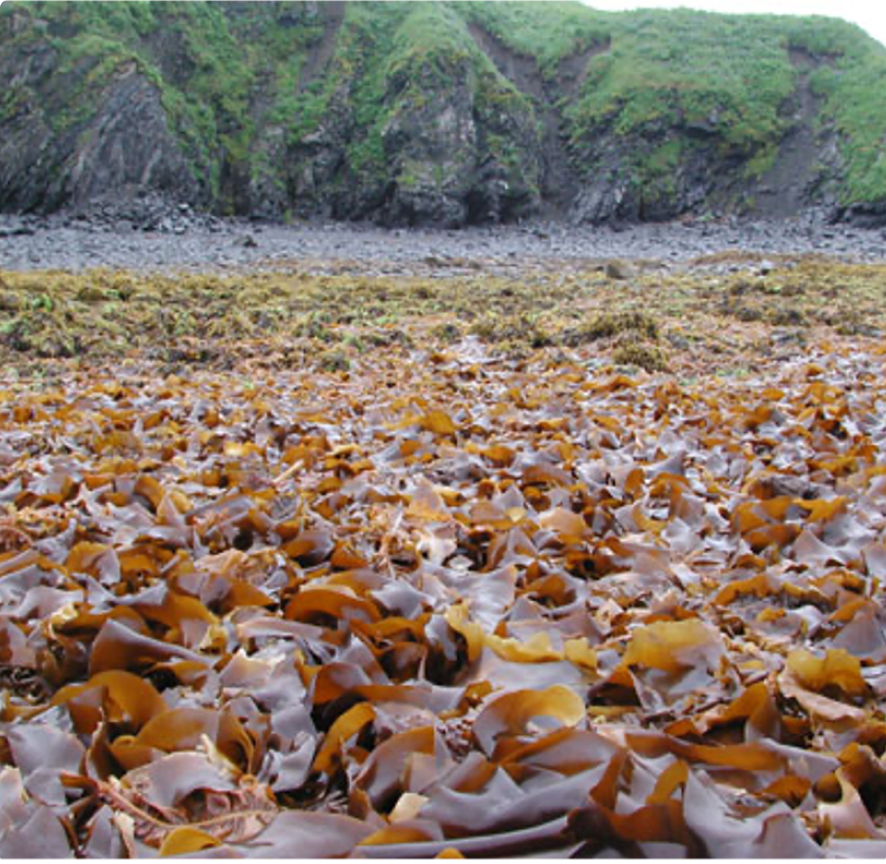
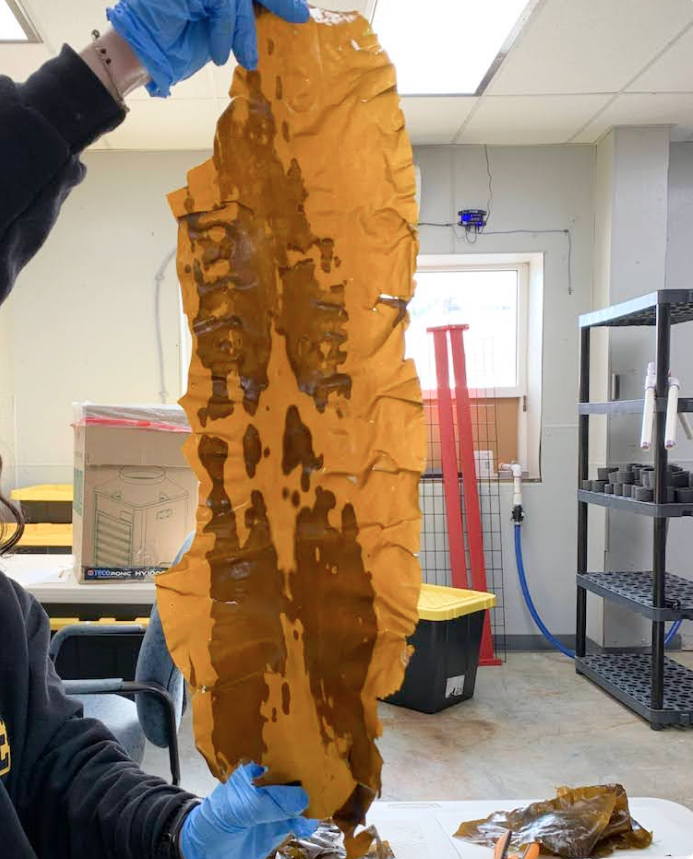
In Alaska, sugar kelp blades sometimes feel crunchy or paper-like when broken. The species tends to prefer sandy or muddy bottoms and protected waters, such as small inlets or coves. On the East Coast, sugar kelp tends to prefer rocky bottoms.
-
-
Golden-brown blade
-
Can sometimes have bullations, or “puckers,” on the blade
-
Low, intertidal
Saccharina latissima can sometimes be misidentified for split kelp (Hedophyllum nigripes, previously named Saccharina groenlandica).
These species can look similar as juveniles but are easier to tell apart as adults. The split kelp is thicker and leatherier in texture, and the blades often split when they’re mature, giving it its common name. Additionally, Saccharina latissima tends to live in sheltered or subtidal environments and often has thinner blades that are slightly lighter in color with a papery feel. By contrast, Hedophyllum nigripes tends to live in more wave-exposed areas and has a deep olive-brown color with a tougher feel to the blade. It’s also possible to tell them apart by examining the stipe. Saccharina latissima has a rounded, cylindrical stipe, whereas Hedophyllum nigripes has a more robust and almost rectangular stipe.
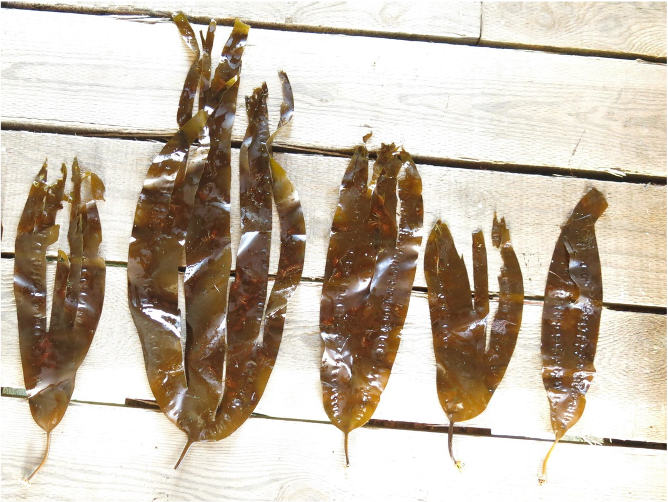
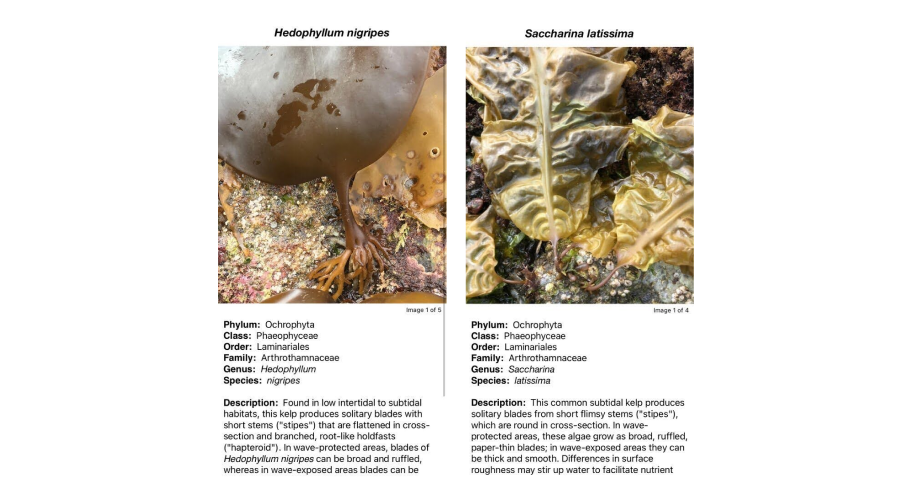
It’s possible to tell the species apart by examining the stipes. Credit: Seaweed Sorter App
On the East Coast, sugar kelp can also sometimes be mistaken for horsetail kelp (Laminaria digitata) when they are both juveniles.
However, once mature, horsetail kelp has a short, thick stipe and blades that split into finger-like segments, making it more distinguishable from sugar kelp’s single, undivided blade. Horsetail kelp is also a culturable species of cold water kelp.
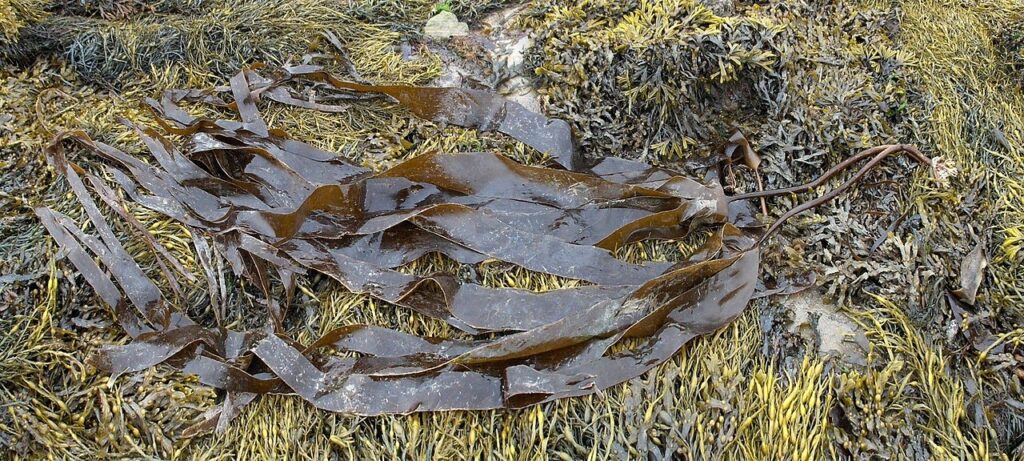
Another common “look alike” species of sugar kelp is mini or false kelp (Petalonia fascia).
False kelp grows up to 8 inches as single, golden brown blades and can be found in estuaries, intertidal and subtidal areas. The main distinguishing factor from sugar kelp is false kelp does not have a stipe or holdfast. See its description on page 43 of “Seaweeds of Long Island Sound”.
